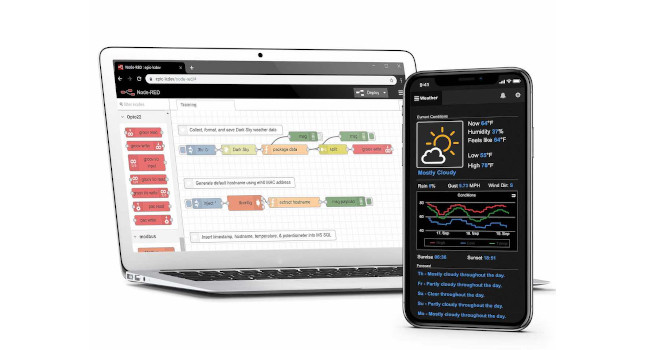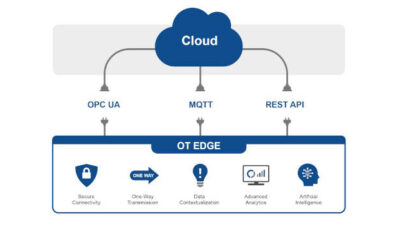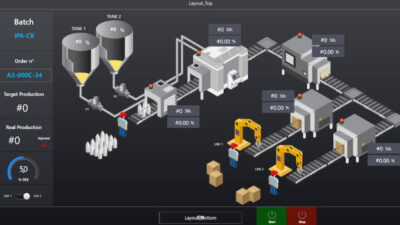Edge computing is becoming more prevalent, and it’s imperative for engineers to get in on the action. Learn four skills engineers can develop to be better prepared.

The worlds of information technology (IT) and operations technology (OT) are colliding. The industrial sector is seeing serious investment in large- and small-scale operations to make data more prolific, available and usable for accelerating operations and solving complex field problems. A key trend underlying this shift is the move towards edge-oriented, rather than centralized or hierarchical models, of automation system design, generally called edge computing.
Talking the talk: Terms
The first thing to understand is edge computing did not evolve in a vacuum and, in practice, does not refer to a single technology. It’s an architectural concept related to a larger paradigm called distributed computing, in which computing resources are spread throughout a system, rather than centralized in a master controller or application. Engineers who have worked with a distributed control system (DCS) have already seen this paradigm in action.
Rather than being an evolution of the DCS, however, edge computing traces its genesis to the globally distributed networks that made up the internet in the early 2000s. Large, centralized networks faced an inherent problem of constrained bandwidth and latency. To improve responsiveness, it made sense to move resources geographically closer to the areas that commonly requested them. At the same time, the proliferation of smart devices and the push towards the Internet of Things (IoT) made computing resources and services more available locally. The same trends are manifesting themselves in the industrial sector, as networks converge to create an Industrial Internet of Things (IIoT).
Compared to DCSs, edge-oriented systems are even more distributed for data processing, storage, and connectivity. These functions are being pushed closer to the lowest layers of the automation network, where real-world sensing and control take place. That’s the edge in edge computing.
Depending on the scope of the discussion, however, the edge of the network could be considered anything in the last mile of the network and is better thought of as being distinct from resources located in the network core or in the cloud.
The term edge devices can refer to intelligent field devices, like transmitters, programmable logic controllers (PLCs), and programmable automation controllers (PACs), or to edge gateways, like protocol converters, routers and industrial PCs (IPCs), which connect various parts of a network or bridge disparate networks. Devices like these are becoming more involved in aggregating and normalizing process data.
Data normalization refers to the process of reformatting data, adding metadata, removing outliers and filling in gaps so core systems and databases can work with data in a consistent format. This becomes important as data is produced and transmitted at scale by many more, possibly heterogeneous, devices and protocols: legacy fieldbuses mixed with OPC data, cloud-sourced JSON, and new smart wireless formats. Edge devices help by pre-processing data in the field and eliminating extraneous data, reducing the demand for network bandwidth and core processing power.
Industrial edge computing has evolved beyond improving resource utilization. With more powerful devices at the edge, we can bring new functionality to the process. An industrial edge device might have the horsepower, for example, to host visualization, database, communication, or applications servers for the local process, reducing dependence on high-maintenance PCs and tightening IT integration.
Four ways to improve edge computing skills
Edge computing architectures, by design, blend previously segregated functions and technologies. For OT specialists, capitalizing on this shift may require developing new skills. Among leading skills for edge computing are system design, networking, database expertise and security. Here’s a little more on what is required to develop these skills.
1. System design — An edge-oriented system needs someone who understands how everything fits together. Edge devices, computer networks, and software systems each have specific resource constraints, and the quality of their interactions will improve or degrade overall system effectiveness. When data is moving across domains, interoperability becomes a bigger concern. It’s helpful to understand common data exchange formats, like JSON, and how to process and organize data efficiently in collaboration between many devices. These factors determine system-wide attributes, like scalability, which are becoming more important as we move towards IIoT integration over the next decade.
2. Networking —Edge computing improves the performance of IT/OT systems in part by using network resources more efficiently. It helps, then, when working with edge computing systems, if engineers understand how to measure and manage the performance of computer networks. Adding several edge devices pumping out reams of data can slow a network to a crawl. If designed correctly, it can improve responsiveness in the field while reducing usage in the core. Implementing efficient communication protocols, like message queuing telemetry transport (MQTT), can further reduce bandwidth demand. Other factors like scalability and fault-tolerance also may play a role in network design or the selection of devices and communication protocols.
3. Database expertise — Databases are important for data storage, distribution and analysis in IT and OT systems. Edge computing makes them more connected and numerous, which requires OT specialists to understand something about how they are designed and how to interact with them. Database security and efficiency can be negatively impacted by the quality of incoming data and the frequency and type of transactions. Specific software includes an open-source IoT connectivity tool to help share data among edge devices, databases and cloud services. Another software simplifies database connectivity for industrial applications.
4. Security — Physical and cybersecurity cannot be taken for granted when data can be stored, accessed and managed at many points in a control network. Engineers working with this kind of network will have to become familiar with the potential risks and the tools used to mitigate them. Engineers need to understand the function and implementation of network security devices like firewalls, as well as data protection features like authentication, encryption and certification. They also should be able to assess the security profile of new devices and applications before they’re introduced to the network.
Here comes the edge: Get ready to jump
Do not ignore the inevitability of edge computing, or any of the technologies contributing to IT/OT integration and the move towards IIoT. As everyday devices become more powerful, engineers will be asked to do more with them. This is a trend engineers can get in front of and will see more opportunities to create value for internal and external customers with the knowledge gained. Engineers who choose to explore and invest in developing new knowledge, skills and connections will find doors opening to them for years to come. Fortunately, there are many tools, both commercial and in open source, to help share data among edge devices, databases, and cloud services. It’s worth investing the time to understand them.
Josh Eastburn, director of technical marketing, Opto 22. Edited by Chris Vavra, associate editor, Control Engineering, CFE Media and Technology, [email protected].
MORE ANSWERS
Keywords: edge computing, industrial controller
Edge computing is becoming more important for engineers as industrial and operations technology (IT/OT) departments become more intertwined.
Edge computing architectures blend previously segregated features and functions by design.
Engineers need to develop skills such as database expertise, security, and networking.
ONLINE
Read this article at www.controleng.com for additional stories from the author linked below.
Consider this
What skills do you already have with edge computing and what do you need to work on the most?



